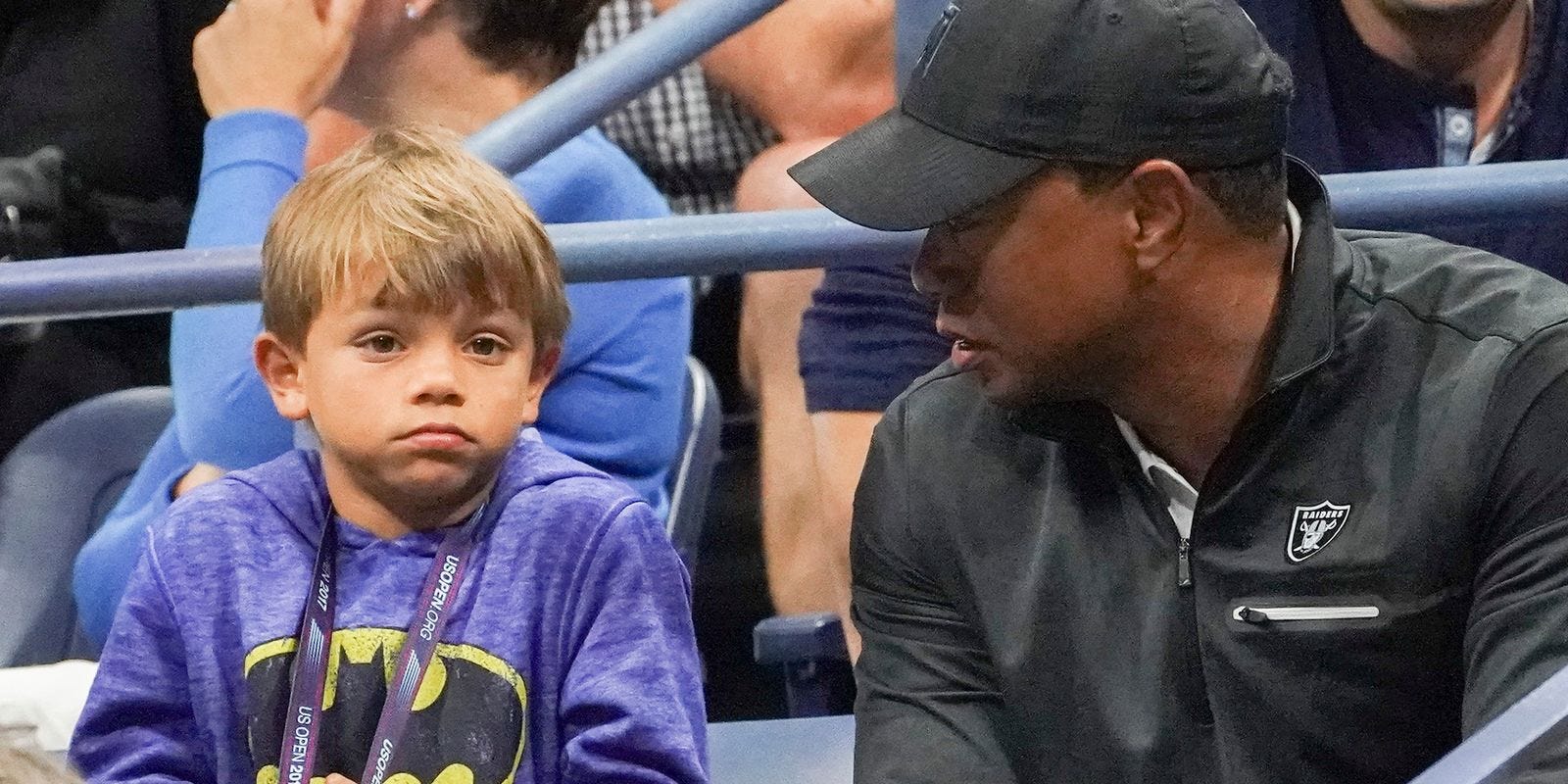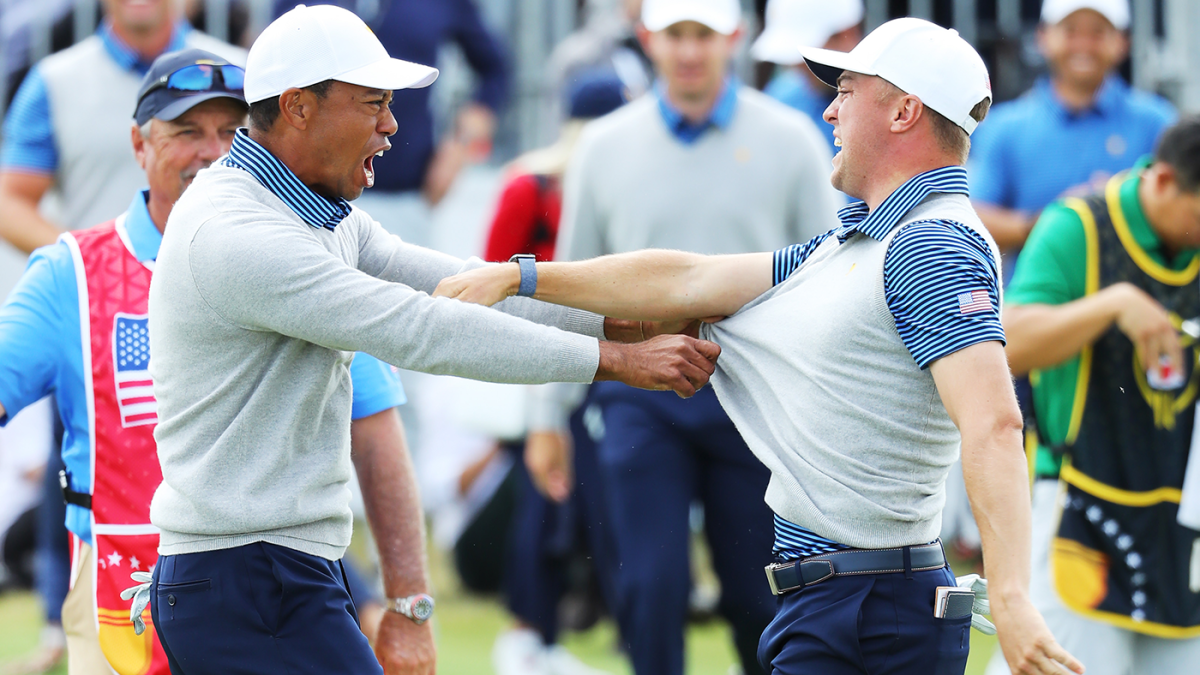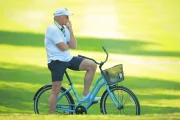You’ve seen them — helicopter golf parents.
Can’t count the time we’ve seen parents hovering over their children, hoping the golf bug will bite, hoping they’ll get good enough to earn a college scholarship or perhaps advance to a professional level.
Charlie Woods, son of Tiger, has already drawn national publicity after he won the last two junior events he entered, shooting under par in both. It will be interesting to watch and see how serious he wants to get about the game. Tiger has the ultimate back-yard training facility at his Jupiter Island compound. A lot of us would have gone crazy to have access to something like that when we were Charlie’s age.
So here’s a bit of a primer on how to expose your junior hopeful to the game.
The late, great instructor, Harvey Penick, taught youngsters to play from the hole outward. That means you learn to putt first. Learn to make two-foot putts, then three-foot putts, then five-foot putts, etc. Then you learn to chip and finish off those chips by putting the ball to see how you’re progressing with that short game. A parent once bragged to Harvey that little Johnny had made his first birdie. When Penick inquired, the adult responded that little Johnny had hit a tee shot on a short par three to within three feet and they “gave him” the birdie putt. To which Harvey quickly responded: “Johnny still hasn’t made a birdie.”
When my interest in golf came to light, we were stationed at Quantico, home of the Marine Corps Schools. Awesome golf course and I started there as a caddie. The first club I bought was a putter and I began my pursuit of the game learning how to putt. You had to pass a “proficiency” test, overseen by the head professional, in order to go out onto the golf course to actually play.
Learning from the hole outward is an awesome way to start the game. You’ll find out in a hurry if your child can handle the fact that golf is a solitary game, a game you work on at your own pace.
There are lots of programs out there now. The First Tee is the most popular but understand exactly what the First Tee is. It’s an introductory-level program that also teaches manners and citizenship along with golf fundamentals. The “teachers” are often assistants and in some cases, they aren’t even professionals. If your child shows excitement about the game, then you might explore one-on-one lessons. Lessons are cheap, neither is equipment.
Golf is a time commitment. It’s a big one. What’s most important is that children have fun and want to explore the facets of the game without being pushed or “heavily encouraged.”
Finally, if your child advances enough to play in tournaments, consider NOT going out on the course and watching their every shot. That didn’t happen years ago but it happens a lot today. That time on the course should be the junior golfer’s time.
Tiger has caddied for Charlie in at least one event. But that’s Tiger Woods.
Will Charlie Woods eventually play on the PGA Tour?
“Only if he wants it bad enough,” Tiger told everyone.
Keep that in mind — your child has to “want” to play and learn the game.



































6 Comments
baxter cepeda
The First Tee has many pga pros running programs, often coaching First tee Classes. And yes there can be some coaches whom golf very average, but they are often the best at teaching many other important lessons. As I say, it takes a village to raise a golfer. If anything I see many brats closed minded to any help or feedback from anyone but their swing instructor, which they spend less than an hour a week with.
While it is true parents can be too involved, make no mistake, too involved is way better than not involved enough.
While it makes some sense for junior golfers to not have spectators for some smaller, local events,
It is important to provide families the option to spectate. Various tours where we live Uniquely do not allow spectators, which i clearly see reduces participation. No one wants to work all week only to take your kids to the course on the weekend and have to volunteer or just kill time.
Many parents don’t want to bother their kids, but they do want to simply enjoy watching their own kids play in competition; most parents watch very quietly from a distance so as not to bother anyone.
Some parents never spectate their kids until the biggest events, which is probably not helpful to young players because they are not used to it. Competitors need to learn to play in front of people, especially their parents.
I do believe golf organizations need to have strict guidelines for spectating and/or caddying junior events and obviously enforce them. But again, eliminating parents from spectating is not for the good of the game because it prevents growing the game.
Tom Edrington
Baxter: We do not propose “eliminating” spectating by parents; I do recall Jack showing up to watch Gary play in some events when he was in high school and there were 200 people watching Jack watch Gary…..
baxter cepeda
Even A lot of high school golf, at least around here, doesn’t allow spectating either.
I find that ridiculous.
As a swimmer and water polo player i loved having mom and dad there to watch.
When I played soccer as a kid I loved having my dad as the coach and a bunch of people yelling and screaming.
Some people are not able to work with their kids, or even be around them, but most parents know how to strike that balance.
I’m just saying golf is expensive and time consuming. Son telling families what they can and cannot do is just not smart. Imo.
Tom Edrington
One of the huge problems in many sports is the parents; A good friend, former college pitcher and financial supporter of his local youth baseball leagues told me: “parents have ruined Little League baseball”……I have seen too many “helicopter” parents who think their kids are going to play the tour one day…..they’re in for a letdown.
baxter cepeda
“Helicopter parents” is why I say they need strict guidelines and enforcement of parent behavior in every junior sport; But not exclusion or differential treatment of parents.
…for example the usga not allowing parent-caddies for Jr Am events is unfair. For many players mom or dad are the best, if not only option for a looper.
Most parents just want to help their kids, organizations can help everyone by just telling moms and dads clearly what they can and cannot do. In golf (at least) good guidelines should solve 99% of parental issues.
The 1% remaining is how organizers earn their position (paid or not) by handling parent issues firmly. People push the line, so like parents, organizers need to draw the line and enforce it.
Some parents will always need to be suspended. If organizers don’t have a system to identify unwanted behavior or the backbone to punish trouble parents, leagues suffer.
Tom Edrington
Baxter: Great feedback from a golf-parent, thanks!!